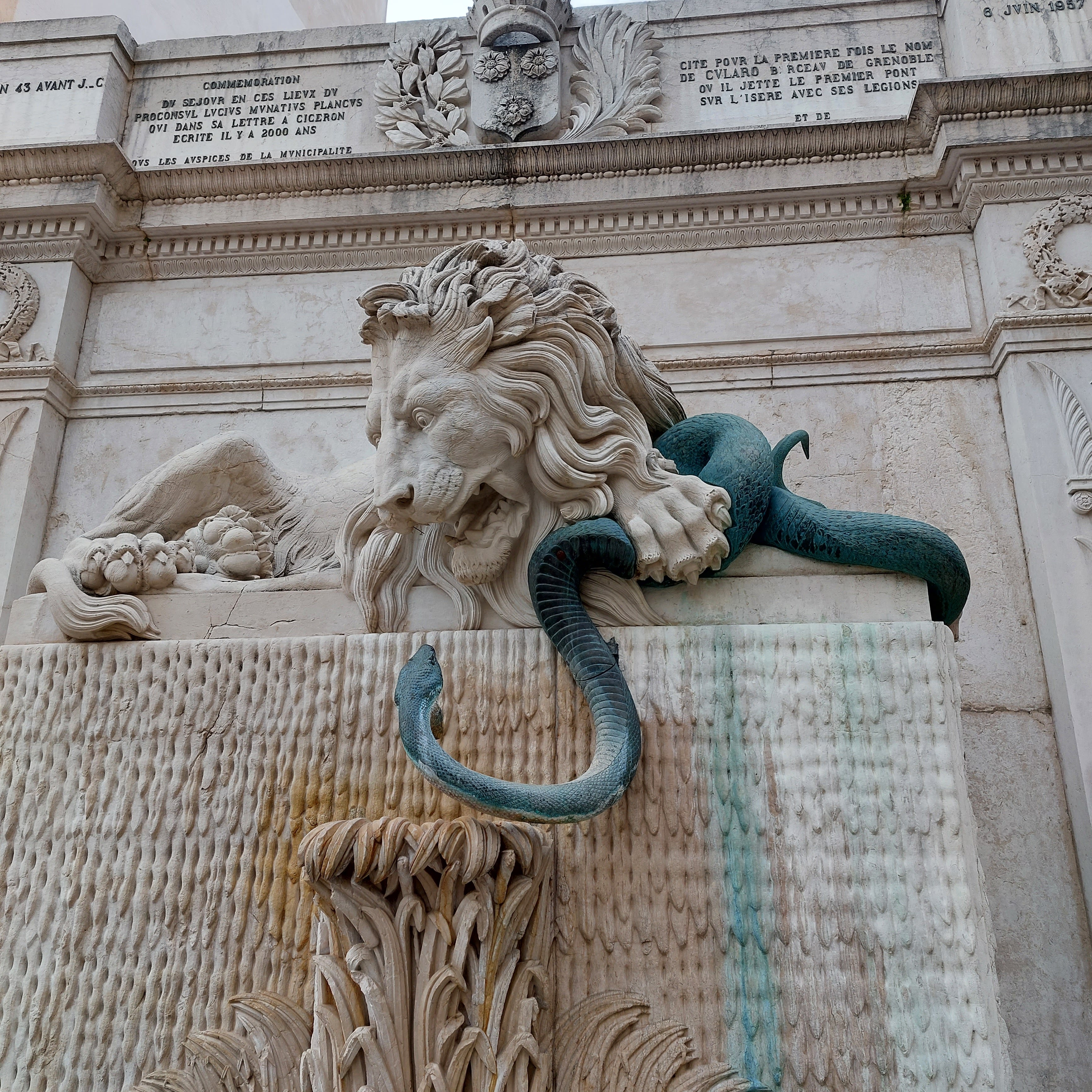Fontaine au Lion: A Symbol of Grenoble's Rich Heritage
In the heart of Grenoble, where history and modernity intertwine, a charming fountain stands as a testament to the city's enduring spirit. This captivating work of art, known as the Fontaine au Lion, has been captivating visitors and locals alike for generations, offering a glimpse into the rich cultural tapestry of this Alpine city.

A Fountain with a Story
The Fontaine au Lion can be found gracing the Place Grenette, a bustling square that has long been considered one of Grenoble's social hubs. This elegant fountain, with its majestic lion centerpiece, was not always situated in this location. Originally, it was commissioned in the 19th century to adorn the Place Notre-Dame, where it remained until 1897.
During its relocation to Place Grenette, the fountain was carefully dismantled and reassembled, a process that speaks to the value placed on preserving Grenoble's architectural heritage. Today, it continues to be admired as a fine example of 19th-century public art, its presence adding a touch of classical elegance to the vibrant urban landscape.
Things to do in Grenoble
Artistry in Stone
The fountain's design is attributed to the sculptor Victor Sappey, a native of Grenoble who left an indelible mark on the city's artistic legacy. Sappey's creation features a proud lion perched atop a pedestal, water cascading from its mouth into the basin below. The lion, a symbol of strength and nobility, is believed to represent the city itself, standing guard over its citizens and visitors.
Intricate details can be observed in the stonework, from the lion's flowing mane to the decorative elements adorning the fountain's base. These fine touches are a testament to the skill of 19th-century craftsmen and the importance placed on public beautification during that era.
A Gathering Place
More than just a decorative feature, the Fontaine au Lion has become a popular meeting point for Grenoble's residents and visitors. On warm summer days, the area around the fountain is often filled with people taking a moment to rest, chat with friends, or simply enjoy the soothing sound of flowing water amidst the urban bustle.
The fountain's location in Place Grenette puts it at the center of Grenoble's pedestrian zone, surrounded by cafes, shops, and historic buildings. This positioning ensures that it remains an integral part of daily life in the city, observed and appreciated by countless passersby.
Preserving Heritage
Over the years, efforts have been made to maintain and restore the Fontaine au Lion, ensuring that future generations can continue to enjoy this piece of Grenoble's history. These conservation efforts reflect the city's commitment to preserving its cultural heritage while embracing progress and innovation.
The fountain serves as a reminder of Grenoble's past, standing in contrast to the city's modern developments and technological advancements. This juxtaposition of old and new is characteristic of Grenoble, a city that honors its history while looking confidently toward the future.
A Symbol of Grenoble
For many, the Fontaine au Lion has come to symbolize Grenoble itself - a city of strength, beauty, and enduring spirit. Its image is often featured on postcards and in guidebooks, inviting visitors to discover the charm of this Alpine city.
As you explore Grenoble, taking in its blend of natural beauty and urban sophistication, the Fontaine au Lion stands as a reminder of the city's rich cultural heritage. Whether you're a history enthusiast, an art lover, or simply someone who appreciates beautiful public spaces, this fountain is sure to leave a lasting impression.
After admiring the Fontaine au Lion, your journey through Grenoble's artistic heritage can be continued with a visit to the Musée de Grenoble, where a vast collection of fine art awaits, spanning from ancient civilizations to contemporary masterpieces.

 Home
Home Wishlist
Wishlist